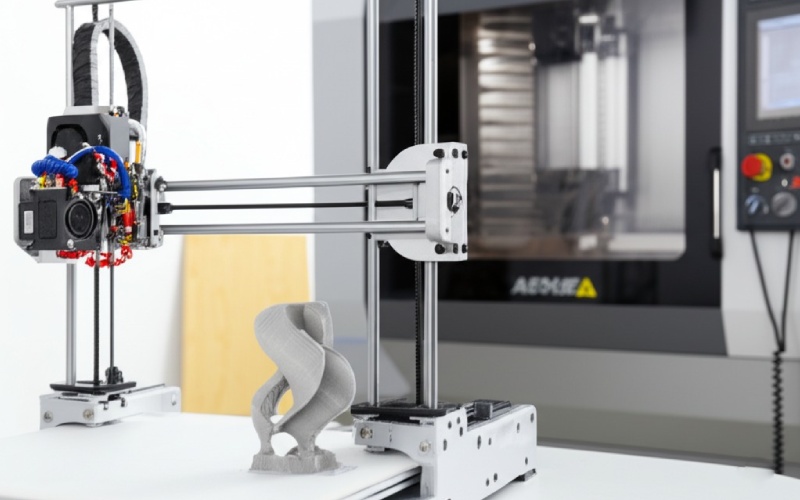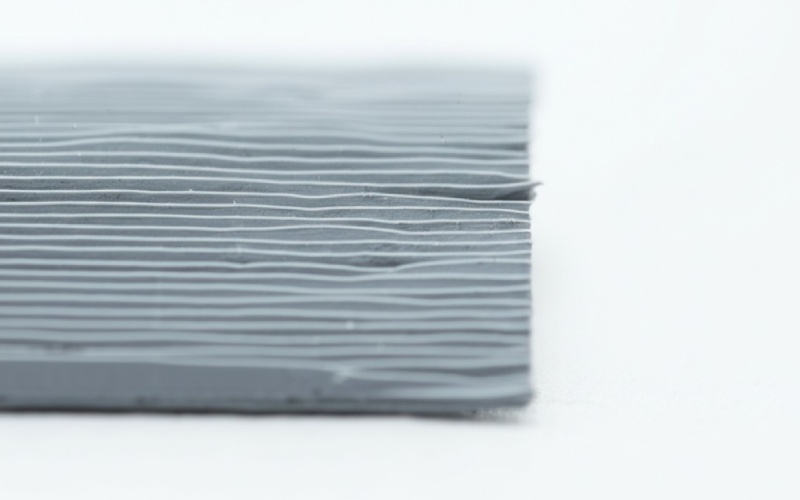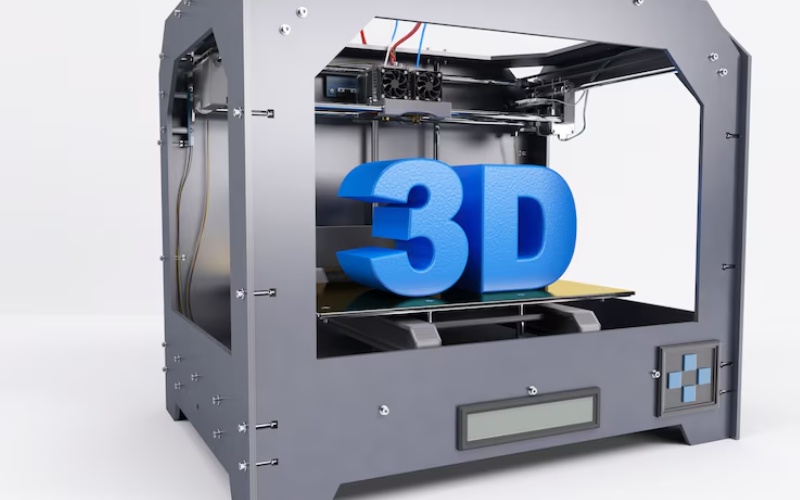Let Istar help you get started on your project with our experience and know-how!
Upload your design files and production requirements and we will get back to you within 30 minutes!

I have used 3D printers for a long time, and I’ve seen them make some really cool things. They can make quick models, called prototypes, and special tools. It feels like they can do anything. But I’ve also learned that 3D printing, which is also called additive manufacturing, has things it can’t do. It is not a magic box that makes any object you want right away. You should read this because I’m going to share what I’ve learned from using these machines. Knowing about these problems will help you use this great technology in a better way and stop you from getting upset. I will tell you the real truth about 3D printing.
Many people feel that if you can design it, a printer can make it. From what I’ve seen, that’s not really right. The 3D printing process has special rules for your design that you must follow. For example, a design with parts that stick out too far can’t be printed without help. Think about printing a little bridge in the air; the warm material would just fall down. Computer software can add little stands for support, but you have to take them off later. This is extra work and can leave marks on the part’s surface. This is a big problem that many people new to 3D printing have.
A very tricky design can also be a problem. 3D printing is good for making complex shapes that old ways of making things can’t do. But there are still limits. Very tiny details or winding paths inside a part can be hard to print well over and over. You also need a “watertight” or “manifold” 3D model. This means your computer design must be a solid shape with no holes in it. If the model isn’t perfect, the printer’s software can get mixed up and the print will not work. This is a common problem that you need to fix with careful work on the computer model.
One of the first things people ask is about the size of an object they can print. The simple answer is you are stuck with the build size of your 3d printer. Most home printers that people use have a build area that is about 8 to 12 inches on each side. If you want to print something bigger, you have to split the design into smaller parts and put them together after they print. This way works, but it takes more time and can make the object weak where the parts connect.
On the other hand, 3D printers for the industry can be much bigger. Some can print objects that are many feet wide. There are even huge printers that can print whole houses from cement. But these large machines cost a lot of money and are not something you would have at home. So for most people, the size of the object you can build in one go is a big limit of the 3d printing process. Having to break up a large part is a common problem that changes how you design and make something.
People often think that 3D printing is instant, that you just push a button and your object shows up. I can tell you from using them, this is not true at all. The 3d printing process can be very slow. Based on the part’s size and how hard it is to make, a single print can take from a few hours to many days. A small, easy object might take an hour, but a big, detailed prototype could take over 40 hours.
The speed of the 3d printer is based on its technology and the settings you pick. For example, if you print with thinner layers to get a nicer surface, the print time will be much longer. This choice between speed and quality is a problem you always have. The industry is always trying to make faster machines. But 3D printing is still not a way to make thousands of parts quickly like old production methods. The fact that it is not instant is a key thing where what people expect is different from what is real.
How strong a 3D printed part is is a big subject in the industry. Because parts are made layer by layer, they have a certain kind of weakness. They are weaker between the layers than the material is by itself. Think of it like a stack of paper. It is easy to pull one sheet off the top, but it is hard to tear the whole stack. This is a key property of 3d printing technologies, and it can change how long a final product lasts.
The material you use makes a big difference in how strong the part is. Normal plastics like PLA are strong but can break easily. Materials like ABS and PETG are better at taking hits. For jobs that need very strong parts, the industry uses advanced 3d printing with materials like nylon or even filaments with carbon fiber in them. But even with these materials, a 3d printed part is usually not as strong as a part made the old way, like with a mold. A mold makes a solid, single object. The challenge is to design the part and place it the right way for the print, to make sure the layers can take the stress the part will get.

A common wrong idea is that a 3D printed part comes out of the machine with a perfect, smooth surface. The truth is, how the surface of a print looks can be very different. Most 3D printing methods, like FDM which is used in many home printers, leave lines on the surface of the object. This gives the part a bumpy feel. How clear the printer is and the layer height you set will change how much you can see these lines.
To get a smooth surface, most 3D prints need work after they are done. This can be sanding, polishing, or using chemicals to melt the outside surface a little. These steps add more time and work to the production process. Some 3D printing technologies, like SLA, can make a much smoother surface right from the machine. But they often use materials that are not as strong. Getting a high-quality surface is a challenge that can need a lot of extra work after the print is done. The final look of the product can really depend on this extra work.
When you make a design for 3D printing, one of the most important things to think about is wall thickness. This is how thick the outside walls of your object are. If you design a wall that is too thin, it can be a big problem. The part might be too weak and break easily. Or it might not even print because the part is too small for the printer to make. This is a common issue that can cause prints to fail and waste material.
On the other side, making a wall too thick can also cause problems. It uses more material, which makes the cost and the print time go up. Very thick walls can also lead to problems like bending or cracking as the material cools down. The best wall thickness is based on the 3D printing technology, the material you use, and the size of the printer’s nozzle. For example, a good rule for many printers is to make the wall thickness at least two times the size of the nozzle to make a strong build. Finding the right thickness is a key part of good 3d modeling for additive manufacturing.
The cost of 3D printing is not just the price of the 3d printer. I have learned that many people forget the other costs, like materials, fixing the machine, and prints that do not work. You can find some low-cost printers. But the materials, especially for advanced 3d printing jobs, can cost a lot. The cost of special metal dusts or strong plastics is a big part of the total cost of a part.
Another part of the cost is the time it takes to print an object. For a company, a machine that runs for 20 hours to make one prototype is a real cost. Also, 3D printing is not a perfect process. Prints can fail. When they do, they waste material and time, which adds to the cost. When you look at the cost for each part, 3D printing is great for one prototype or a small number of custom products. But for making a lot of something, old production methods get much cheaper for each part.
The selection of the right material is a very important step in the 3D printing process, and it can be a real problem. There is a smaller number of materials available for 3D printing than for old ways of manufacturing. Most printers for home use a small selection of plastics like PLA and ABS. The number of different materials is growing, with materials that can bend or handle heat. But the selection is still not huge.
Every material has its own special properties that you need to match with your job. For example, if you need a part that can bend and not break, you can use a bendy filament. If you need a part for the car industry, you may need a material that can take high heat. The challenge is that not all materials can be used on all machines. Some materials need a warm build area or a special kind of tool to push the material out. This makes material selection a hard job that needs knowledge.
A big limit of today’s 3D printing technology is that it can’t print complex things made of many materials, like a smartphone, all at once. A new electronic product is made of many different parts, like plastics, metals, glass, batteries, and circuit boards. A normal 3d printer can only print with one kind of material at a time. Some advanced 3d printing technologies can use more than one material, but they are still very limited.
The idea of printing a full, working electronic tool is still being worked on. The industry is looking at ways like using special filaments that carry electricity to print simple circuits. But we are far away from printing complex electronics. To build a working product, you still need to print the plastic parts. Then you have to put them together with electronic parts that were made separately. This is a key area where 3D printing can’t yet do what old production methods do. To perform this kind of complex production is a future goal for the technology.

In making things, repeatability means you can produce the very same part again and again. This is an area where 3D printing can be a challenge. High-cost industrial machines have good repeatability. But lower-cost home printers can have trouble making the same part every time. Small changes in the printer’s setup, the material, or even the room’s heat can change the final size and quality of the print.
This lack of perfect repeatability can be a problem for end-use parts that need to fit together just right. For a person making one object for fun, this may not be a big issue. But for a business that needs to make 100 parts that are all the same, it can be a big problem. To get good repeatability, you need to take good care of the machine, have a controlled room, and check the quality of the parts. This is another reason why 3D printing is often better for a prototype or a single custom production instead of making things on a large scale.